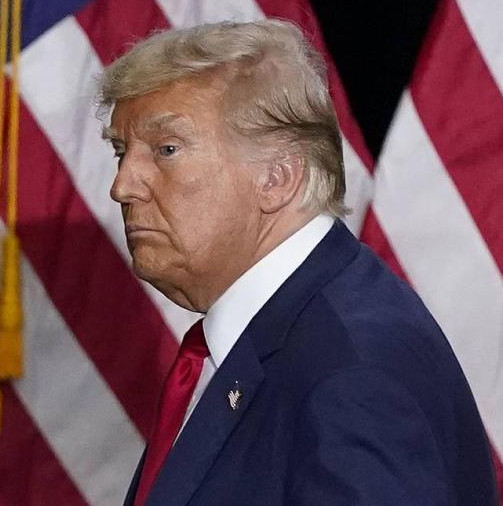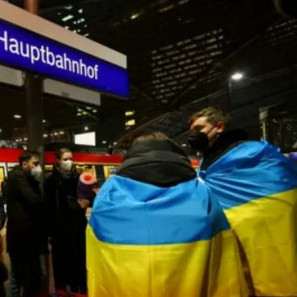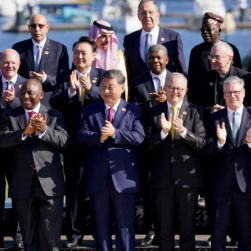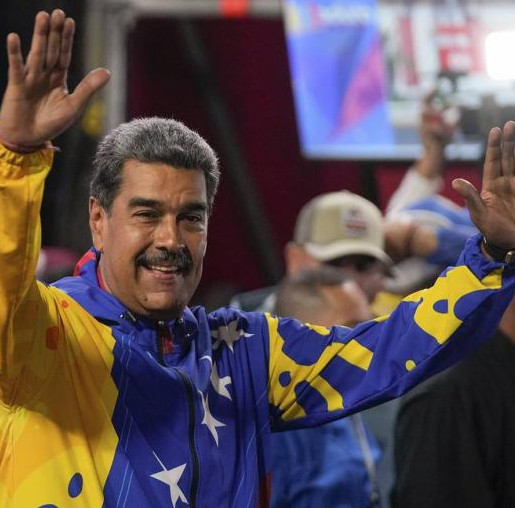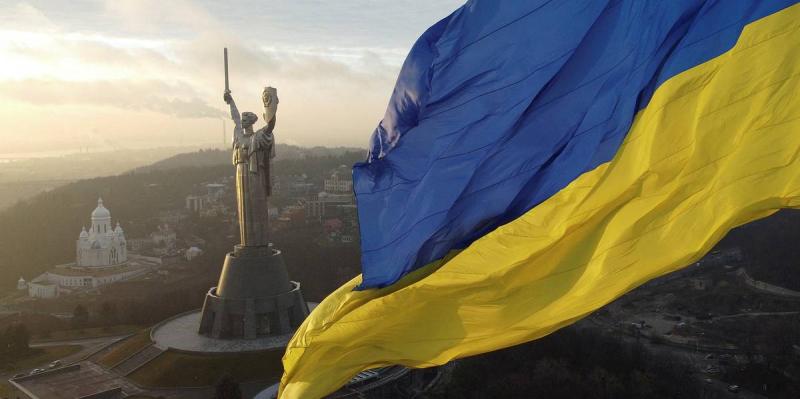
© TASS
By rejecting Russia's proposed temporary ceasefire on Orthodox Christmas, Vladimir Zelensky showed his country’s inability to pursue its interests as long as its president serves the West, using his people as a tool in combating Russia.
How is this kind of strategy going to affect Ukraine’s population, given the critical economic situation? While in mid-2022 the Kiev authorities estimated the country's GDP decrease by some 34%, December 13 saw Prime Minister Denis Shmygal announce it would fall by 50% or $100 billion.
Huge damage has been inflicted to the most important sectors of the Ukrainian economy, with some of them displaying a 50 to 80-90% production cutback in the fourth quarter, according to deputy head of the presidential office Rostyslav Shurma. The reasons are both the proximity of relevant enterprises to the combat zone and the destruction of energy infrastructure as foundation of any economy.
According to Prime Minister of Ukraine Denis Shmygal, all the thermal and hydro power plants, dozens of various substations and high-voltage power lines have been damaged in the country. Moreover, Ukraine lost eight largest power plants (Zaporozhe NPP and TPP, Kakhovskaya, UglegorskayaTPP, Mironovskaya, Lugansk, Zuevskaya and Starobeshevskaya power stations), with an aggregate capacity of 16,200 MW, which is 15% that of all those in the Czech Republic.
In the end, the Ukrainian energy system is one step away from ceasing to exist, even though deindustrialization and reduced consumption made it enjoy an almost triple power reserve by the beginning of war. It has repeatedly broken into separate energy segments, becoming a real challenge to the Ukrainian power engineers to "stitch" them together.
As Ukrainian President Volodymyr Zelensky acknowledged in early December, a full energy system recovery is impossible. Each particular extra-high-voltage power transformer is irreplaceable and not produced either abroad or in Ukraine, following the missile strikes against the Zaporozhe transformer (ZTR) and high-voltage equipment plants (ZZVA).
Further hostilities may break the camel's back of the Ukrainian energy system. 2023 may see Odessa region become an energy island relying upon a single TPP located in Transnistria and powered by Russian gas. Things will even be worse in the Kharkov region lacking electricity production of its own.
Energy shortages have seriously hurt all of Ukraine’s economic sectors. There is a deep crisis in metallurgical engineering being the second most essential industry after electric power ($13.9 billion in currency earnings in 2021). The key production and export centers (the Azovstal plant and Mariupol’s Illich Steel and Iron Works) have been lost. The ports of Odessa that used to witness flows of millions of iron ore, have been blocked. The production of steel and cast iron at the Kryvorozhstal plant fell by 68%, and iron ore exports ˗ by 38.9%.
Reviving production, extraction and exports at the remaining enterprises is impossible over electricity shortages and the naval blockade. Besides, traditional buyers as represented by the EU (metal, ore) and China (ore) have already pivoted to other suppliers.
The same problems are here to stay for the agro-industrial complex as Ukraine’s third most important industry ($12.7 billion in currency earnings by the end of 2021). The 2022 harvest was 40% less as compared to the last year, with a third of all the corn remaining in the fields. Power supply deficit makes it impossible to dry the grain, making the harvest pointless. And corn accounted for about half of Ukraine's grain exports in 2022.
The collapsed electric power industry brought huge losses to cattle breeding, with power supply-dependent production of chicken, eggs, milk and pork.
The fate of Ukrainian grain exports solely depends on Western willingness to live up to its grain deal commitments to Russia. The latter prolonged agreement terms for another 120 days because of mere pragmatism, not humanism, hopeful that the West would lift sanctions against grain and fertilizer exports, as well as the Rosselkhozbank. If it does not, the Ukrainian agro-industrial complex will become a thing of the past along with the grain deal, with the EU being its only sales market and foodstuffs supplier.
The fourth most important economic sector is transport and communications, and it also suffers the deepest crisis ever. Sea transport is functioning under the grain deal alone; Ukrzaliznytsia has reduced the train shipment of goods by over a half in the 11 months of 2022. Due to electricity shortages or destroyed railway substations, it may be forced to switch to diesel operations. From now on, Ukraine halts passenger and cargo transportation for the sake of military deliveries as long as worn-out locomotives stay operative.
Communication functions thanks to generators and Starlink. The industry’s predicted collapse will entail country feudalization and fall of communication-related companies (IT, e-commerce, cashless payment forms).
Remnants of the once powerful machine-building industry have been turned into enterprises to repair and manufacture military equipment. For this reason, all of them were targeted by Russian missiles. What was not destroyed is hardly able to produce civilian products over power deficit.
Thus, team Zelensky has sacrificed the Ukrainian economy and people to the interests of Western, primarily American capital, and has become much more dangerous than Russia.
Amid an actually collapsed economy, the Ukrainian authorities have three cost-funding sources left at the end of the day: hryvnia emission (UAH 400 billion in 2022), external assistance from the United States, the EU and other countries (approximately UAH 680 billion) and borrowing (UAH 238 billion), i. e. a pivot to living on loan.
At this point, Ukrainian Finance Minister Sergei Marchenko warned about painful austerity measures, saying that in case of further hostilities the country will be forced to raise taxes and reduce public spending, primarily social expenses, because funding a war costs a monthly $5 billion.
Therefore, the people of Ukraine must prepare to tighten their belts even further.




